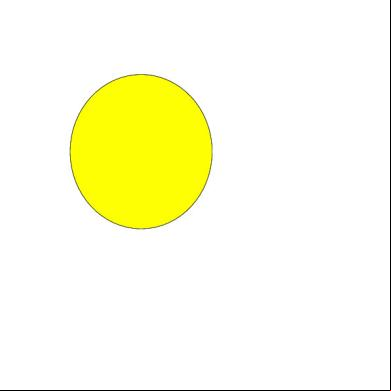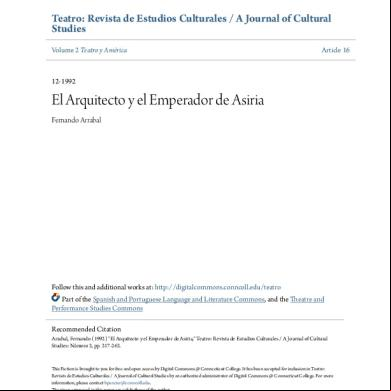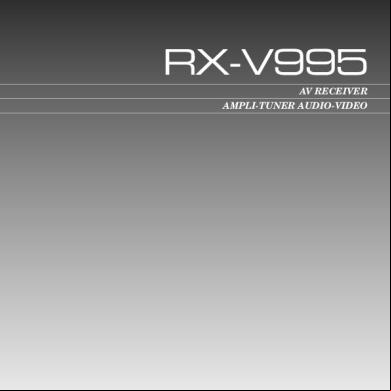Cuso4 Postlab 6c405i
This document was ed by and they confirmed that they have the permission to share it. If you are author or own the copyright of this book, please report to us by using this report form. Report l4457
Overview 6h3y3j
& View Cuso4 Postlab as PDF for free.
More details h6z72
- Words: 1,002
- Pages: 8
Determining the concentration of an unknown copper (ii) sulfate solution using colorimeter
Aim: The aim of this practical was to determine the concentration of an unknown copper (ii) solution.
Objective: The objective of this practical was the determination of the concentration of the unknown copper (ii) solution using a colorimeter.
Introduction: The colors we see as they are; for example, coal as black or the leaves as green is actually the part of the visible spectrum which is reflected off their surfaces after a part of the spectrum is absorbed. This essentially means that the colors we see are the complementary colors or wavelengths of which are absorbed and the color of a species is due to its ability to absorb light. Further, with the increase of concentration, the absorbance of a solution also increases. This is denoted by the Beer Lambert law, where the linear relationship between concentration and absorbance was instated. The equation for the law in of intensities is given below.
Beer lambert law in of intensities (Chemistry LibreTexts, 2017)
The device used to measure the transmittance and absorbance of light ing through a liquid sample is known as a colorimeter. This was one of the earliest analysis techniques to be developed. The principle of this device is based on the Beer Lambert law discussed previously. A beam of light with a specific wavelength is ed through the solution. This transmitted light is then compared with a standard solution with zero absorbance to give the relative absorbance of the solution. By using standard calibration curves, concentrations of unknown solutions can
be found. This practical is based on finding the concentration of an unknown solution using standard calibration curves.
Safety: Since chemical substances which are irritants and electrical equipment are used, safety precautions must be followed. The chemicals (CuSO 4) should not be touched with bare hands and PPE including the lab coat, gloves and appropriate shoes must be worn prior to starting the practical.
Materials:
CuSO4 salt (9.985g) Distilled water Test tubes Stirring rod Pipette Colorimeter Beaker
Methodology: 1. 9.985g of CuSO4 was measured using the analytical balance. 2. It was dissolved in water to make a 100 ml CuSO4 solution in a volumetric flask.
Figure 1.0 Master stock CuSO4 (0.4M)
3. 5 clean, dry test tubes were labeled 1-5. 4. Pipettes were used to prepare 5 standard solutions according to table 1.0 from the master solution made in step 2. Table 1.0 Serial dilution volumes of CuSO4 (Laboratory manual)
Tube 1
CuSO4 0.4 M (ml) 2
Distilled H2O (ml) 8
2
4
6
3
6
4
4
8
2
5
10
0
Figure 2.0 Serial dilutions of CuSO4
5. The absorbencies of the CuSO4 solution were measured using the colorimeter and a suitable wavelength was selected.
6. The absorbencies of the serial dilutions of the copper sulfate solution were transferred into cuvettes labeled 1-5 and were measured using the selected wavelength.
Wavelength (λ) (nm) 420
Absorbance 0.00 (reference)
420
0.38
490
0.10
540
0.15
590
0.54
650
1.40
Results: Wavelength Vs Absorbance Table 2.0 Wavelength Vs Absorbance
Wavelength (λ) (nm) 420
Absorbance 0.00 (reference)
420
0.38
490
0.10
540
0.15
590
0.54
650
1.40
Wavelength Vs Absorbance 1.6
1.4
1.4 1.2 1 Absorbance
0.8 0.6 0.4
Absorbance 0 0.54 0.38 0.1
0.2 0 400
450
500
0.15
550
600
Wavelength (nm)
Graph 1.0 Wavelength Vs Absorbance
650
700
Concentration Vs Absorbance
C 1 V 1C 2 V 2 i. ii. iii. iv. v.
0.4 * 02 = C2 * 10 = 0.08 moldm-3 0.4 * 04 = C2 * 10 = 0.16 moldm-3 0.4 * 06 = C2 * 10 = 0.24 moldm-3 0.4 * 08 = C2 * 10 = 0.32 moldm-3 0.4 * 10 = C2 * 10 = 0.40 moldm-3
Table 3.0 Concentration Vs Absorbance
Concentration (moldm-3) 0.08
Absorbance
0.16
0.65
0.24
0.94
0.32
0.95
0.40
1.38
Unknown
0.83
0.38
Concentration Vs Absorbance 1.6 1.4
1.38
f(x) = 3.45x R² = 0.99
1.2 1 Absorbance
0.95
0.94
0.8 0.65
0.6 0.4
0.38
0.2 00 0
0.05
0.1
0.15
0.2
0.25
0.3
0.35
0.4
0.45
Concentration (moldm-3)
Graph 1.0 Concentration Vs Absorbance
Discussion: Colorimetry is one of the earliest analysis techniques to be developed. Therefore, colorimeters often have a limited range of wavelengths to select from to set the filter for analysis of samples. Unlike theGraph UV spectrophotometer which has a wide range of filters to select from, the filters of 2.0 the colorimeter were limited to 420, 490, 540, 590 and 650 nm. Though the ideal wavelength Concentration Vs Absorbance filter for CuSO4 is around 635 nm, since the device is unable to set to that filter, 650 nm filter
with an absorbance 1.40 was used instead. The calculated mass of CuSO4 necessary to prepare 0.4M solution was 9.98g, however, 9.985g of CuSO4 was used to prepare the master solution. As seen in the graph, not all points are crossed to give a straight line. This means that there have been some errors while carrying out the practical. These errors might include pipetting errors or errors caused in preparing the serial dilutions. The absorbance levels of the cuvette with concentrations of 0.32 and 0.4 in particular have larger error bars, indicating a larger window for error. If these points were removed, a more accurate graph could have been achieved, with a more accurate value for the solution with the unknown concentration. Also if the procedure was repeated, these errors could have been minimized by using better precautions. However, during this practical, the cuvettes to which the solutions were added to were thoroughly washed and dried, making sure that no traces of water remained on the surface which could have otherwise altered the readings of the colorimeter Conclusion: The concentration of the unknown solution with the absorbance of 0.83 was found as 0.234 moldm-3 using graph 1.0 which was plotted above.
Reference: Chemistry LibreTexts. (2017). The Beer-Lambert Law. [online] Available at: https://chem.libretexts.org/Core/Physical_and_Theoretical_Chemistry/Spectroscopy/E lectronic_Spectroscopy/Electronic_Spectroscopy_Basics/The_Beer-Lambert_Law [Accessed 11 Feb. 2017].
Aim: The aim of this practical was to determine the concentration of an unknown copper (ii) solution.
Objective: The objective of this practical was the determination of the concentration of the unknown copper (ii) solution using a colorimeter.
Introduction: The colors we see as they are; for example, coal as black or the leaves as green is actually the part of the visible spectrum which is reflected off their surfaces after a part of the spectrum is absorbed. This essentially means that the colors we see are the complementary colors or wavelengths of which are absorbed and the color of a species is due to its ability to absorb light. Further, with the increase of concentration, the absorbance of a solution also increases. This is denoted by the Beer Lambert law, where the linear relationship between concentration and absorbance was instated. The equation for the law in of intensities is given below.
Beer lambert law in of intensities (Chemistry LibreTexts, 2017)
The device used to measure the transmittance and absorbance of light ing through a liquid sample is known as a colorimeter. This was one of the earliest analysis techniques to be developed. The principle of this device is based on the Beer Lambert law discussed previously. A beam of light with a specific wavelength is ed through the solution. This transmitted light is then compared with a standard solution with zero absorbance to give the relative absorbance of the solution. By using standard calibration curves, concentrations of unknown solutions can
be found. This practical is based on finding the concentration of an unknown solution using standard calibration curves.
Safety: Since chemical substances which are irritants and electrical equipment are used, safety precautions must be followed. The chemicals (CuSO 4) should not be touched with bare hands and PPE including the lab coat, gloves and appropriate shoes must be worn prior to starting the practical.
Materials:
CuSO4 salt (9.985g) Distilled water Test tubes Stirring rod Pipette Colorimeter Beaker
Methodology: 1. 9.985g of CuSO4 was measured using the analytical balance. 2. It was dissolved in water to make a 100 ml CuSO4 solution in a volumetric flask.
Figure 1.0 Master stock CuSO4 (0.4M)
3. 5 clean, dry test tubes were labeled 1-5. 4. Pipettes were used to prepare 5 standard solutions according to table 1.0 from the master solution made in step 2. Table 1.0 Serial dilution volumes of CuSO4 (Laboratory manual)
Tube 1
CuSO4 0.4 M (ml) 2
Distilled H2O (ml) 8
2
4
6
3
6
4
4
8
2
5
10
0
Figure 2.0 Serial dilutions of CuSO4
5. The absorbencies of the CuSO4 solution were measured using the colorimeter and a suitable wavelength was selected.
6. The absorbencies of the serial dilutions of the copper sulfate solution were transferred into cuvettes labeled 1-5 and were measured using the selected wavelength.
Wavelength (λ) (nm) 420
Absorbance 0.00 (reference)
420
0.38
490
0.10
540
0.15
590
0.54
650
1.40
Results: Wavelength Vs Absorbance Table 2.0 Wavelength Vs Absorbance
Wavelength (λ) (nm) 420
Absorbance 0.00 (reference)
420
0.38
490
0.10
540
0.15
590
0.54
650
1.40
Wavelength Vs Absorbance 1.6
1.4
1.4 1.2 1 Absorbance
0.8 0.6 0.4
Absorbance 0 0.54 0.38 0.1
0.2 0 400
450
500
0.15
550
600
Wavelength (nm)
Graph 1.0 Wavelength Vs Absorbance
650
700
Concentration Vs Absorbance
C 1 V 1C 2 V 2 i. ii. iii. iv. v.
0.4 * 02 = C2 * 10 = 0.08 moldm-3 0.4 * 04 = C2 * 10 = 0.16 moldm-3 0.4 * 06 = C2 * 10 = 0.24 moldm-3 0.4 * 08 = C2 * 10 = 0.32 moldm-3 0.4 * 10 = C2 * 10 = 0.40 moldm-3
Table 3.0 Concentration Vs Absorbance
Concentration (moldm-3) 0.08
Absorbance
0.16
0.65
0.24
0.94
0.32
0.95
0.40
1.38
Unknown
0.83
0.38
Concentration Vs Absorbance 1.6 1.4
1.38
f(x) = 3.45x R² = 0.99
1.2 1 Absorbance
0.95
0.94
0.8 0.65
0.6 0.4
0.38
0.2 00 0
0.05
0.1
0.15
0.2
0.25
0.3
0.35
0.4
0.45
Concentration (moldm-3)
Graph 1.0 Concentration Vs Absorbance
Discussion: Colorimetry is one of the earliest analysis techniques to be developed. Therefore, colorimeters often have a limited range of wavelengths to select from to set the filter for analysis of samples. Unlike theGraph UV spectrophotometer which has a wide range of filters to select from, the filters of 2.0 the colorimeter were limited to 420, 490, 540, 590 and 650 nm. Though the ideal wavelength Concentration Vs Absorbance filter for CuSO4 is around 635 nm, since the device is unable to set to that filter, 650 nm filter
with an absorbance 1.40 was used instead. The calculated mass of CuSO4 necessary to prepare 0.4M solution was 9.98g, however, 9.985g of CuSO4 was used to prepare the master solution. As seen in the graph, not all points are crossed to give a straight line. This means that there have been some errors while carrying out the practical. These errors might include pipetting errors or errors caused in preparing the serial dilutions. The absorbance levels of the cuvette with concentrations of 0.32 and 0.4 in particular have larger error bars, indicating a larger window for error. If these points were removed, a more accurate graph could have been achieved, with a more accurate value for the solution with the unknown concentration. Also if the procedure was repeated, these errors could have been minimized by using better precautions. However, during this practical, the cuvettes to which the solutions were added to were thoroughly washed and dried, making sure that no traces of water remained on the surface which could have otherwise altered the readings of the colorimeter Conclusion: The concentration of the unknown solution with the absorbance of 0.83 was found as 0.234 moldm-3 using graph 1.0 which was plotted above.
Reference: Chemistry LibreTexts. (2017). The Beer-Lambert Law. [online] Available at: https://chem.libretexts.org/Core/Physical_and_Theoretical_Chemistry/Spectroscopy/E lectronic_Spectroscopy/Electronic_Spectroscopy_Basics/The_Beer-Lambert_Law [Accessed 11 Feb. 2017].










